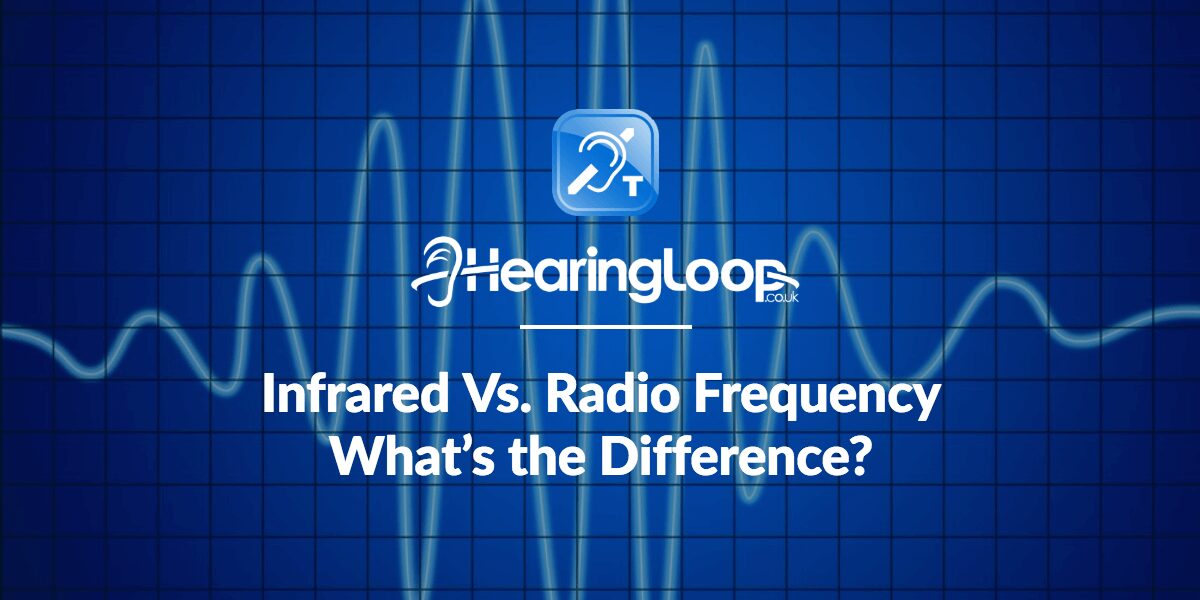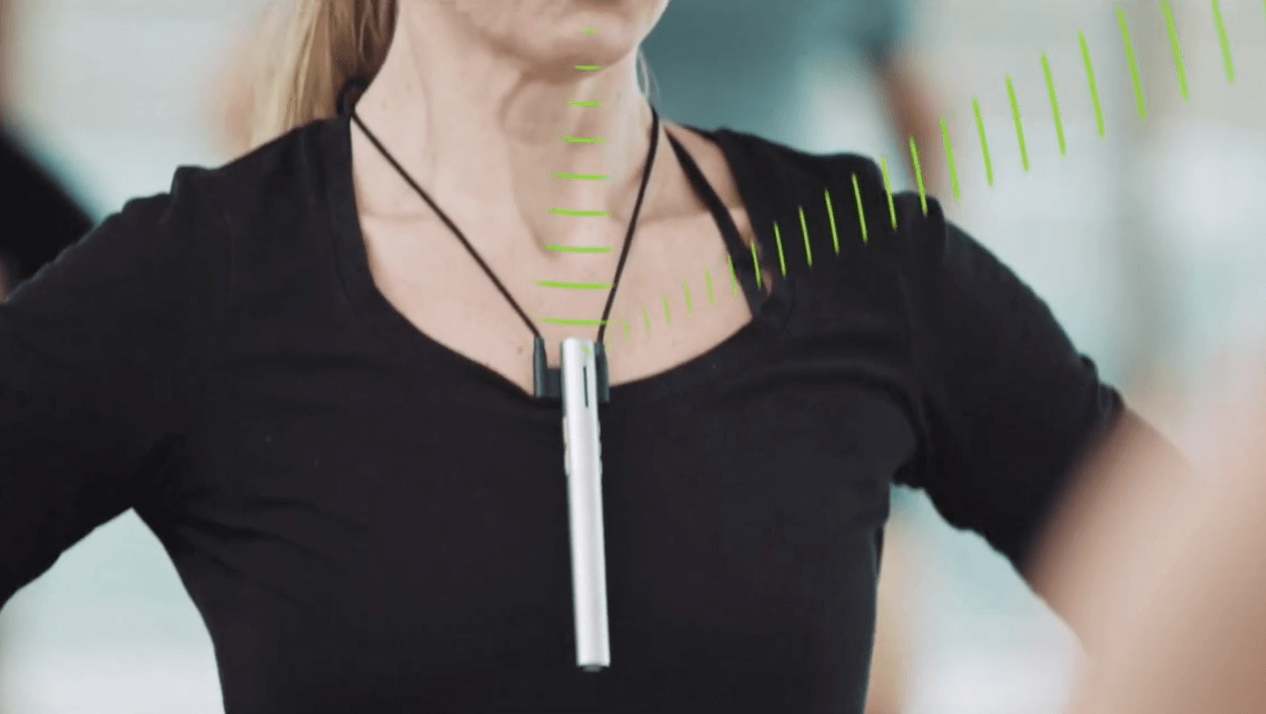BLOG
Home » Loop Technology – Infrared Vs. Radio Frequency – What’s the Difference? – Hearing Loop

Introduction to Loop Technology – Infrared Vs. Radio Frequency – What’s the Difference?
There can be a confusion when it comes to differentiating loop technology and the different kinds of hearing loop systems out there, and more often than not, this uncertainty surrounds the differences between infrared and radio frequency options.
Both types of systems have their benefits, but infrared most certainly has its own drawbacks.
This is not to say infrared has no place in your hearing loop system architecture, but it must be noted that it is designed for specific applications and issues that make unsuitable for general everyday use.
Radio frequency, on the other hand, has many benefits and few drawbacks, can offer much the same functionality as an infrared option and is also much better suited to general everyday usage.
Let’s take a look at the two and see why radio frequency might be the better option.

Infrared
Infrared hearing loop technology systems are traditionally used is in environments where confidentiality is a requirement.
Often, this means in buildings like a courtroom.
In spaces such as these, infrared is used because it has a ‘line of sight’ function.
In this environment, the user is given a neck loop and a stethoset and an infrared beam bounces between the user’s apparatus and the receiver.
This is ideal for ensuring a contained, single-room signal and, thus, ensures confidentiality.
Obviously, this level of protection is hugely important in a courtroom, and for this reason an infrared system is quite good at what it does.
There are drawbacks however to this technology. Because this system requires an uninterrupted infrared beam, anything that breaks this beam also disrupts the user’s signal.
In a courtroom, this issue is mitigated by the fact that it is an orderly environment, but this isn’t always the case in other, busy spaces.
It’s this fragility that means while infrared most certainly has its uses, it is not the optimal solution for most spaces where there is a demand for a hearing loop system to be in place.
Radio Frequency
Unlike infrared technology, a radio frequency system is not hindered by being placed in a busy environment nor is it at risk of signal droppage.
This makes it ideal for business spaces and other areas where people are going to be moving around and generally getting on with their day.
A radio frequency unit can sit anywhere, fitting discreetly underneath clothing.
In contrast to an infrared system, there is no sensitive or bulky equipment requiring careful monitoring.
Indeed, a radio frequency system offers something akin to a plug and play portable hearing loop system set up, with no need for a length installation and set up process. It’s important to note that this ease of use doesn’t mean that a radio frequency system is any less secure than the infrared alternative.
The Phonak Roger radio frequency system can be made fully confidential, giving the best of both worlds.
By pairing a mic with a specific receiver, the user can be set up a secure, confidential loop technology system with no risk of signal hijacking or overspill.
Ultimately, a radio frequency hearing loop technology system provides the same security as the infrared option, with much more flexibility, the same level of security and a more streamlined setup process.

Cost Benefits
When weighing up the cost implications of both systems, a radio frequency system will cost less initially and deliver better cost benefits over the portable loop technology hearing system’s lifetime than an infrared option.
While an infrared system has key benefits and important uses, it is a very specific system made to meet very specific needs.
What this means is that it serves one purpose – confidentiality – and nothing else.
This is good for certain environments but means the wider uses of infrared are very limited and, therefore, it represents a significant investment for a niche need.
Infrared, simply put, has a much narrower range of uses than radio frequency. A Phonak Roger RF System can deliver much the same benefits as infrared, coupled with the flexibility to be used in other areas and for other purposes.
Essentially, a radio frequency unit does what infrared does and more besides, while infrared does only what it can.
In terms of outlay, an infrared system will cost more than its radio frequency counterpart to fulfil a single role in a very controlled environment.
A radio frequency system, coming in a lower initial cost, also delivers more benefits over its lifetime to a range of users and, thus, delivers faster returns on your investment.
Ultimately, a radio frequency system delivers more at a lower cost than infrared, offers the same level of security when needed and, overall, gives you and the user much greater flexibility in terms of application, movement and general freedom in day-to-day use.
To find out more about portable hearing loop systems and everything around the topic, download our guide or call 0114 2357 717 or email us at info@hearingloop.co.uk to get connected to one of our hearing loop experts.
Categories
- Assisted Living (3)
- Communication (4)
- Compliance (2)
- Cordless Telephones (3)
- Design Survey (1)
- Features & Benefits (1)
- Features & Benefits (1)
- General Hearing (4)
- Hearing Loop Systems (14)
- Hearing Loop Uses (4)
- Hearing Loops (29)
- Installation & Commissioning (3)
- Installation & Commissioning (1)
- Portable Hearing Loop (3)
- Portable Hearing Loops (15)
- Service & Maintenance (2)
- Service & Maintenance (1)
- Uncategorized (2)
Recent Posts
- 10 Remarkable Benefits of Using the PL1/K1 Portable Hearing Loop System
- The Ultimate Guide to Phonak Roger ON: How It Works and Who It’s For
- The PL1/K1 Portable Hearing Loop: A Game-Changer for Midwives and Community Healthcare Providers
- Future Proofing Your Portable Hearing Loop System Investment
- What is Hearing Loop Technology?

